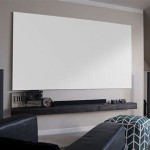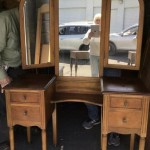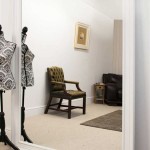Two-Way Mirror Glass: Functionality, Applications, and Considerations
Two-way mirror glass, also known as one-way mirror glass, or a transparent mirror, is a specialized type of glass that appears as a mirror from one side and a transparent window from the other. This unique property makes it valuable in a variety of applications, ranging from security and surveillance to psychological research and theatrical effects. The effect is achieved through a specific combination of glass composition, coating, and lighting conditions.
The fundamental principle behind two-way mirror glass lies in the manipulation of light transmission and reflection. When light strikes a surface, some of it is reflected, allowing us to see images or objects. The remaining light is either absorbed or transmitted through the material. In the case of standard mirror glass, a thick layer of reflective coating, typically silver or aluminum, is applied to the back surface. This coating reflects almost all incident light, creating a clear reflective image. Two-way mirror glass, however, utilizes a much thinner, semi-transparent coating.
This subtle difference in coating thickness is crucial. The thin coating allows a portion of the light to pass through the glass while simultaneously reflecting a portion. To achieve the two-way effect, a significant difference in light intensity is required on either side of the glass. The "mirror" side must be brightly lit, while the "observation" side should be dimly lit. Under these conditions, the observer on the dimly lit side can see through the glass, as the transmitted light from the brightly lit side is more intense than the light reflected from their own side. Conversely, the person on the brightly lit side sees their reflection almost exclusively, as the reflected light from their side overwhelms the small amount of light transmitted from the dimly lit side.
The perceived functionality of two-way mirror glass is often misunderstood. It is not a magical material that selectively allows only one-way viewing regardless of lighting. The effectiveness of the two-way effect is directly proportional to the light differential between the two spaces. If the light levels are similar on both sides, the glass will appear as a slightly tinted window from both perspectives, with a faint reflection superimposed on the view. This is because the amount of reflected and transmitted light becomes more balanced, eliminating the dominance of one over the other.
The Manufacturing Process and Material Composition
The creation of two-way mirror glass involves a precise process that builds upon the manufacturing of standard float glass. Float glass, the most common type of glass used in construction and various applications, begins with melting a mixture of silica sand, soda ash, limestone, and other additives at high temperatures. The molten glass is then poured onto a bed of molten tin, allowing it to spread out uniformly and create a perfectly flat surface. This process ensures consistent thickness and optical clarity.
After the float glass has cooled and solidified, it undergoes a specialized coating process to transform it into two-way mirror glass. This coating is typically applied using vacuum deposition techniques, such as sputtering or vapor deposition. These methods involve placing the glass in a vacuum chamber and then using a process to deposit a thin layer of metallic or metal-oxide material onto the surface. The most common coating materials include aluminum, silver, and chromium. The thickness of this coating is carefully controlled to achieve the desired level of light transmission and reflection.
The thickness of the coating is usually measured in nanometers (nm). A standard mirror coating might be hundreds of nanometers thick, while a two-way mirror coating is often only a few nanometers thick. This precise control over the coating thickness is essential for achieving the one-way mirror effect. The coating needs to be thick enough to reflect a significant portion of the light, but thin enough to allow a substantial amount of light to pass through.
Furthermore, the substrate glass itself plays a crucial role in the performance of the two-way mirror. Low-iron glass, which has reduced iron content compared to standard float glass, is often preferred. This type of glass has a higher light transmittance and lower green tint, resulting in a clearer and more neutral appearance. When combined with the specialized coating, low-iron glass enhances the effectiveness of the two-way mirror effect.
Applications Across Diverse Fields
The unique characteristics of two-way mirror glass make it suitable for a broad spectrum of applications. One of the most common applications is in security and surveillance. Retail stores often use two-way mirrors to monitor shoppers and deter theft. The mirrors are typically installed in walls or ceilings, allowing security personnel to observe the store without being seen by customers. This provides a discreet method for identifying and preventing shoplifting activities.
Law enforcement agencies also utilize two-way mirrors in interrogation rooms. They allow investigators to observe suspects without their knowledge, creating a psychological advantage during questioning. The ability to observe a suspect's body language and reactions without being seen can provide valuable insights and aid in the investigation process. Similarly, two-way mirrors are used in observation rooms in correctional facilities and detention centers.
In the field of psychological research, two-way mirrors play a crucial role in observational studies. Researchers can observe participants in a natural setting without influencing their behavior. This is particularly useful in studying children or individuals with social anxieties, where the presence of an observer might significantly alter their actions. The privacy and anonymity afforded by the two-way mirror allow researchers to collect more accurate and unbiased data.
Another application is in the entertainment industry. Theatrical productions and magic shows often employ two-way mirrors to create special effects. They can be used to create illusions of disappearing objects, ghostly apparitions, or Pepper's ghost effects, where a reflection appears as a three-dimensional image floating in space. The reflective and transparent properties of the glass allow for a wide range of visual illusions that can enhance the audience's experience.
Beyond these specific uses, two-way mirrors also find applications in childcare facilities, casinos, and television studios. Daycare centers sometimes incorporate two-way mirrors into observation areas, allowing parents to observe their children without disrupting their activities. Casinos use them for security purposes, monitoring gambling activities and ensuring fair play. Television studios may use them for hidden camera shows or as props to create visual effects during broadcasts.
Ethical and Legal Considerations
The use of two-way mirror glass raises several ethical and legal considerations, particularly concerning privacy and consent. In many jurisdictions, it is illegal to use two-way mirrors for surveillance or observation without the knowledge and consent of the individuals being observed. This is especially true in areas where individuals have a reasonable expectation of privacy, such as restrooms, locker rooms, and private offices.
The ethical concerns surrounding two-way mirrors stem from the potential for abuse and violation of privacy. Individuals have a right to know when they are being observed and to have control over their personal information. Using two-way mirrors without consent can create a sense of distrust and violate an individual's autonomy. It can also lead to feelings of vulnerability and anxiety, as individuals may be unsure when they are being watched.
To address these concerns, many jurisdictions have laws and regulations governing the use of two-way mirrors. These laws typically require clear signage indicating the presence of two-way mirrors and prohibiting their use in areas where privacy is paramount. Violations of these laws can result in fines, civil lawsuits, and even criminal charges.
Furthermore, professional organizations in fields such as psychology and law enforcement have established ethical guidelines for the use of two-way mirrors. These guidelines emphasize the importance of obtaining informed consent from participants or subjects before engaging in any observation. They also stress the need to protect the confidentiality of any information collected during observation and to use the information only for legitimate purposes.
The legal and ethical landscape surrounding two-way mirror glass is constantly evolving as new technologies and applications emerge. It is crucial for individuals and organizations to stay informed about the latest laws and regulations and to adhere to the highest ethical standards when using this technology. Failure to do so can result in serious legal and reputational consequences.

Glass Two Way Mirror In Stock Custom Sizes Worldwide

Two Way Mirror Mirrorworld

Glass Two Way Mirror In Stock Custom Sizes Worldwide

Two Way Mirrors Glass Acrylic Magic Mirror Central

Two Way Mirror Mirrorworld

Two Way Mirror Mirrorworld

Glass Two Way Mirror In Stock Custom Sizes Worldwide

Allplastics Engineering Pc Hardcoat Mirror

5mm Decoration Smart Glass Mirror China Supplier Two Way Semi Silvered For Television

Glass Two Way Mirror In Stock Custom Sizes Worldwide








